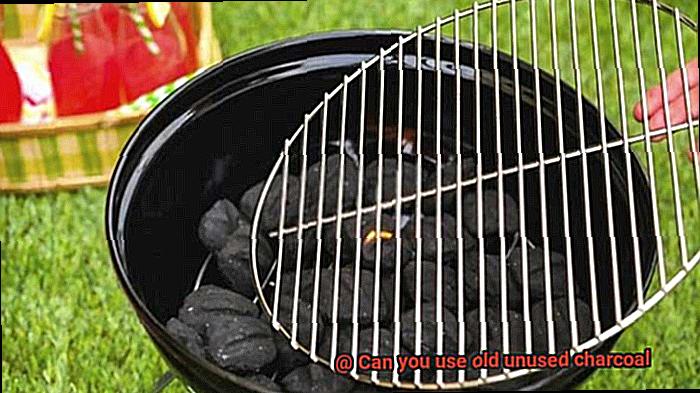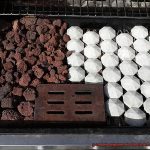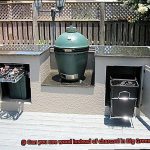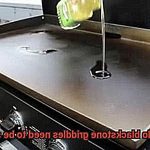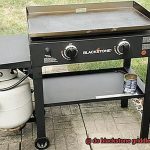Are you a grill master who hoards bags of charcoal during the summer, only to find them gathering dust in your garage come winter? Or have you inherited an old bag of charcoal from a previous homeowner and are wondering if it’s still safe to use? If so, you’re not alone. Many people are curious about whether they can still use old, unused charcoal.
The answer isn’t straightforward. While charcoal doesn’t spoil like milk, it does have a shelf life that depends on various factors such as exposure to air, moisture, or other contaminants. Properly stored in a sealed container, charcoal can last for several years.
But before you ignite those old briquettes, there are some things to consider. Old charcoal may not burn as hot, fast or evenly as fresh ones and may emit more ash or smoke that could affect the flavor of your food. Moreover, using damp or old charcoal poses safety risks since it may not ignite properly and could cause flare-ups.
So while technically you can use old unused charcoal, it might not be worth the risks. Investing in fresh ones ensures optimal grilling performance and flavor.
Contents
What is Charcoal?
Charcoal is a fascinating substance that has been used for thousands of years in various applications. It is a fuel source that is commonly used in grilling, cooking, and industrial processes such as steel and iron production. But what exactly is charcoal?
The process of making charcoal is simple yet complex. It involves burning wood in a low oxygen environment, which removes water, sap, and other impurities from the wood. This process leaves behind pure carbon, which is then formed into various shapes such as lump charcoal or briquettes. Charcoal has been used as a fuel source for thousands of years, dating back to ancient civilizations such as the Egyptians and Greeks. It was also a key component of the Industrial Revolution, providing fuel for steam engines and other machinery.
Today, there are several types of charcoal available on the market. Lump charcoal is made by burning natural hardwoods such as oak or hickory, while briquettes are made by compressing charcoal powder with binders and additives. Flavored charcoal contains added flavorings such as mesquite or applewood. Many people prefer to use lump charcoal due to its natural flavor and higher heat output. However, briquettes are often more readily available and can be easier to use for beginners.
If you’re planning on using old unused charcoal for grilling, it’s important to consider several factors. The age, quality, storage conditions, and quantity of the charcoal all play a role in its effectiveness for grilling. If it has been stored properly in a dry place and is of high quality, it should still be good to use even if it’s a few months old. However, if it has absorbed moisture or other impurities over time, it may not perform well.
How to Determine the Age of Charcoal
When it comes to grilling, nothing beats the smoky flavor of food cooked over charcoal. However, if you’re not careful, using old or expired charcoal can turn your cookout into a disaster. To avoid this, here are five ways to determine the age of charcoal:
Check the Packaging
The first step in determining the age of charcoal is to check the packaging or bag it came in. Most manufacturers include an expiration date on the bag, which will give you a good idea of how old the charcoal is. If the expiration date has passed, it’s best to discard the charcoal and purchase a fresh bag.
Look for Signs of Moisture
Charcoal that has been exposed to moisture will not burn as well as dry charcoal. If your charcoal has been stored in a damp location or has absorbed moisture from rain or snow, it may be too old to use.
Inspect the Color
Fresh charcoal is usually black in color, while older charcoal may be gray or even white in color. If your charcoal has turned white, it is likely too old to use and won’t produce the results you’re looking for.
Smell the Charcoal
Charcoal that has gone bad may have a musty or moldy smell. If you detect any unusual odors, it’s best to discard the charcoal and purchase a fresh bag.
Conduct a Burn Test
If you’re still unsure about the age of your charcoal, you can conduct a burn test by lighting a small amount of it in a safe location. Fresh charcoal will light quickly and burn evenly, while older charcoal may take longer to light or burn unevenly.
It’s important to note that how you store your charcoal can also affect its shelf life. Always keep your charcoal in a dry and cool place to prevent moisture buildup and extend its life.
Quality of Charcoal
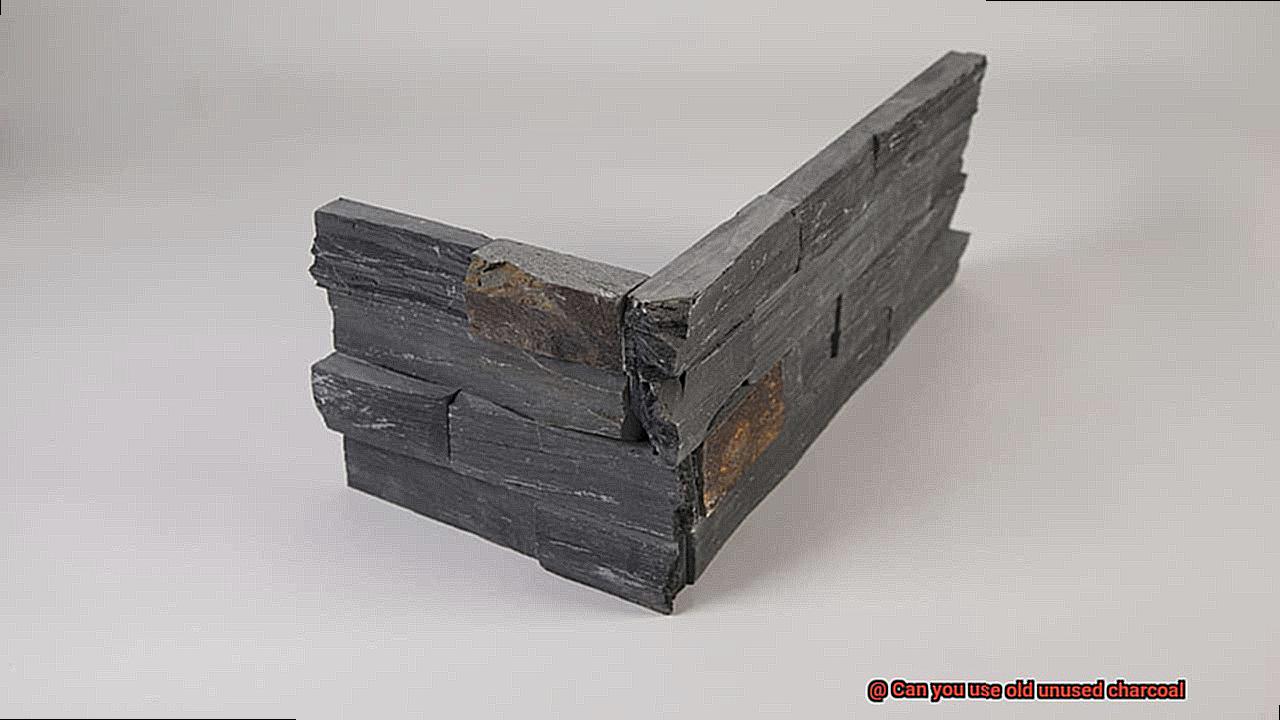
Attention all grill masters. Let’s delve into the world of charcoal and explore what makes it high-quality. From the wood used to the size and shape, there are a variety of factors to consider when selecting the perfect charcoal for your grilling needs.
Firstly, it’s important to understand that cheaper charcoals may be made from lower quality wood or contain additives that can negatively impact flavor and burn time. Therefore, investing in brands that use higher quality wood is crucial in ensuring a superior grilling experience.
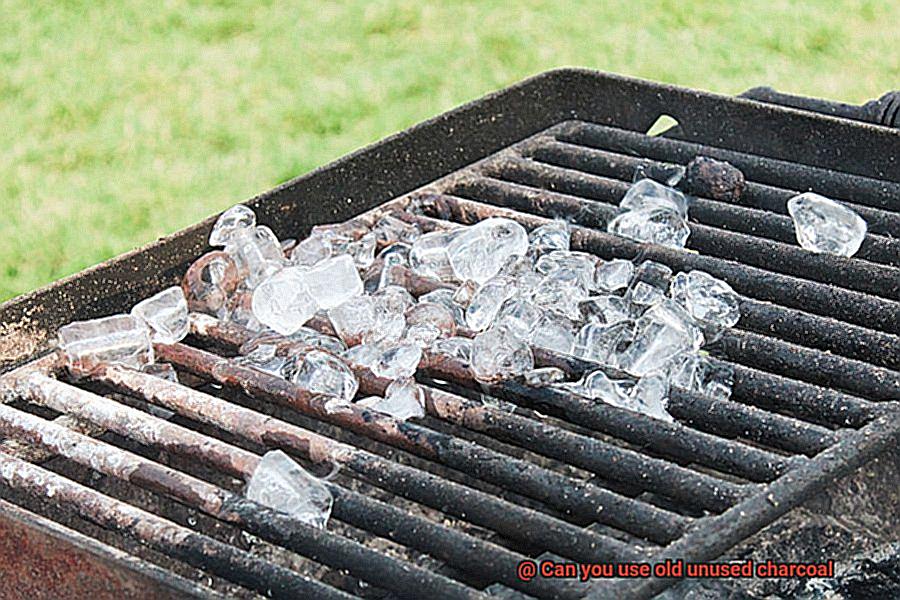
Another key factor to consider is the age of the charcoal. Charcoal can absorb moisture over time which can make it less effective at lighting and burning. It’s recommended to use charcoal within a year of purchase to guarantee peak performance.
Size and shape are also important aspects to consider when selecting charcoal. Smaller pieces may light more easily but burn faster, while larger pieces may require more time and effort to light but burn longer. It’s a personal preference that depends on the specific cooking needs of each individual.
Storage Conditions of Charcoal
Attention, grill masters. As you gear up for the grilling season, it’s essential to know how to store your charcoal properly. Here are some key things to keep in mind when it comes to the storage conditions of charcoal.
First and foremost, make sure that your charcoal is kept in a dry and cool location. Moisture can be the enemy of charcoal, causing it to become damp, which makes lighting it more difficult. Additionally, high temperatures can lead to spontaneous ignition, a dangerous situation that can also cause the charcoal to burn too quickly.
One effective way to store charcoal is by keeping it in its original packaging. Charcoal bags are designed to protect the product from elements that may affect its quality. If you’ve already opened the bag, transfer the remaining charcoal to an airtight container to keep it fresh.
Another option is to use a plastic bin or container with a tightly fitting lid. This helps keep moisture out and prevents the charcoal from absorbing any odors or flavors from other items in your storage area.
Remember that charcoal can absorb moisture from the air, so try to use it within six months of purchasing it. However, if you have older charcoal that has been stored properly and appears dry, it may still be usable. But before using it for cooking purposes, do a quick test burn to ensure that the charcoal is still good.
Here’s a summary of key points for storing your charcoal:
- Keep it in a dry and cool place
- Use its original packaging or transfer remaining charcoal to an airtight container
- Use a plastic bin or container with a tight-fitting lid
- Use within six months of purchasing
- Test older charcoal before using for cooking purposes
Quantity of Charcoal Left
Before you fire up your grill with old unused charcoal from the last session, it’s essential to consider the quantity of charcoal left and how well it was stored. Charcoal is made by heating wood at high temperatures, which removes all moisture and volatile compounds and leaves behind carbon. However, over time, it can absorb moisture and impurities, impacting its performance and potentially affecting the taste of your food.
To determine whether your old unused charcoal is still usable, inspect it carefully for signs of contamination or moisture absorption. Discolored or foul-smelling charcoal should be discarded immediately. Similarly, if the charcoal has become damp or soft to the touch, it’s no longer usable.
But don’t worry – there’s a simple test you can perform to determine whether your old charcoal is still good to use. Take a few briquettes and light them up as you would for a normal grilling session. If they light quickly and burn evenly, your charcoal is still in good shape. However, if they’re difficult to light or fail to burn evenly, it’s time to replace your old charcoal with fresh ones.
It’s crucial to store your charcoal correctly in a dry, sealed container away from moisture and debris. The longer unused charcoal sits around, the more likely it is to absorb contaminants that can affect its performance.
Pros and Cons of Using Old Unused Charcoal
While it may seem like a waste to throw it away, there are some pros and cons to consider before using it to fire up the grill.
First, let’s explore the pros. Using old unused charcoal is cost-effective, as you can avoid buying a new bag of charcoal and save money in the long run. Additionally, the dryness of old unused charcoal makes it easy to ignite, saving time and effort in getting your grill up to temperature. And if you’re looking for a unique flavor, old unused charcoal can add a smoky taste to your food that fresh charcoal may not be able to replicate.
However, there are also some cons to using old unused charcoal. One major drawback is that it may have a lower heat output than fresh charcoal, which can lead to longer cooking times and inconsistent results. Inconsistent burning is also a possibility with old unused charcoal, which can create hot spots on your grill and make it difficult to cook your food evenly. Lastly, if the charcoal has been sitting for too long, its effectiveness at lighting or burning may decrease, resulting in a shorter lifespan and potential waste.
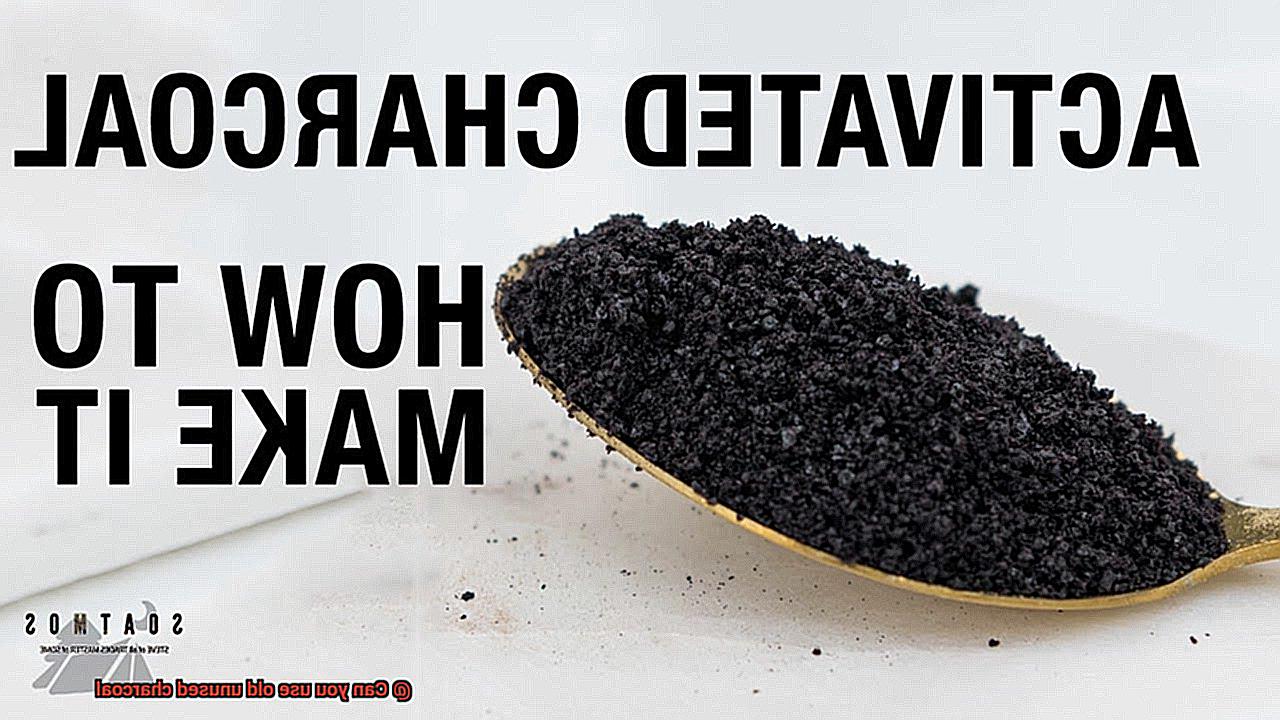
Ultimately, whether or not you use old unused charcoal depends on your personal preferences and grilling circumstances. If you’re willing to risk inconsistent results for a cost-effective and unique flavor option, then go ahead and use it. However, if consistent heat output and even cooking are important factors for you, fresh charcoal may be the better choice.
To ensure the best results with any type of charcoal, it’s important to perform a simple test by lighting up a few briquettes and checking if they burn evenly and quickly. And always store your charcoal in a dry container away from moisture and debris to extend its lifespan.
Proper Handling and Disposal of Old Unused Charcoal
Do you toss it out or try to use it? And if you do decide to use it, how can you make sure it’s still safe and effective?
Proper handling of charcoal is key to maintaining its quality. To ensure your charcoal remains in good condition, store it in a dry place away from moisture and dampness. This will prevent any damage or deterioration that could compromise its effectiveness. Check the bag or container of your charcoal for any signs of damage or deterioration, such as rips, tears, or other damage, which may indicate exposure to moisture.
When it comes time to dispose of old, unused charcoal, it’s crucial to do so safely and responsibly. The best way to dispose of charcoal is to let it cool completely and then place it in a metal container with a tight-fitting lid. This prevents any accidental fires from starting. Do not dispose of charcoal in regular trash or recycling bins, as some municipalities may have specific regulations for the disposal of charcoal.
To determine if your unused charcoal is still safe and effective for grilling, inspect the briquettes for signs of damage or deterioration. If they’re crumbling, disintegrating, or have become powdery, they may no longer be safe to use. Additionally, if the charcoal has a strong odor or mold growth, dispose of it immediately.
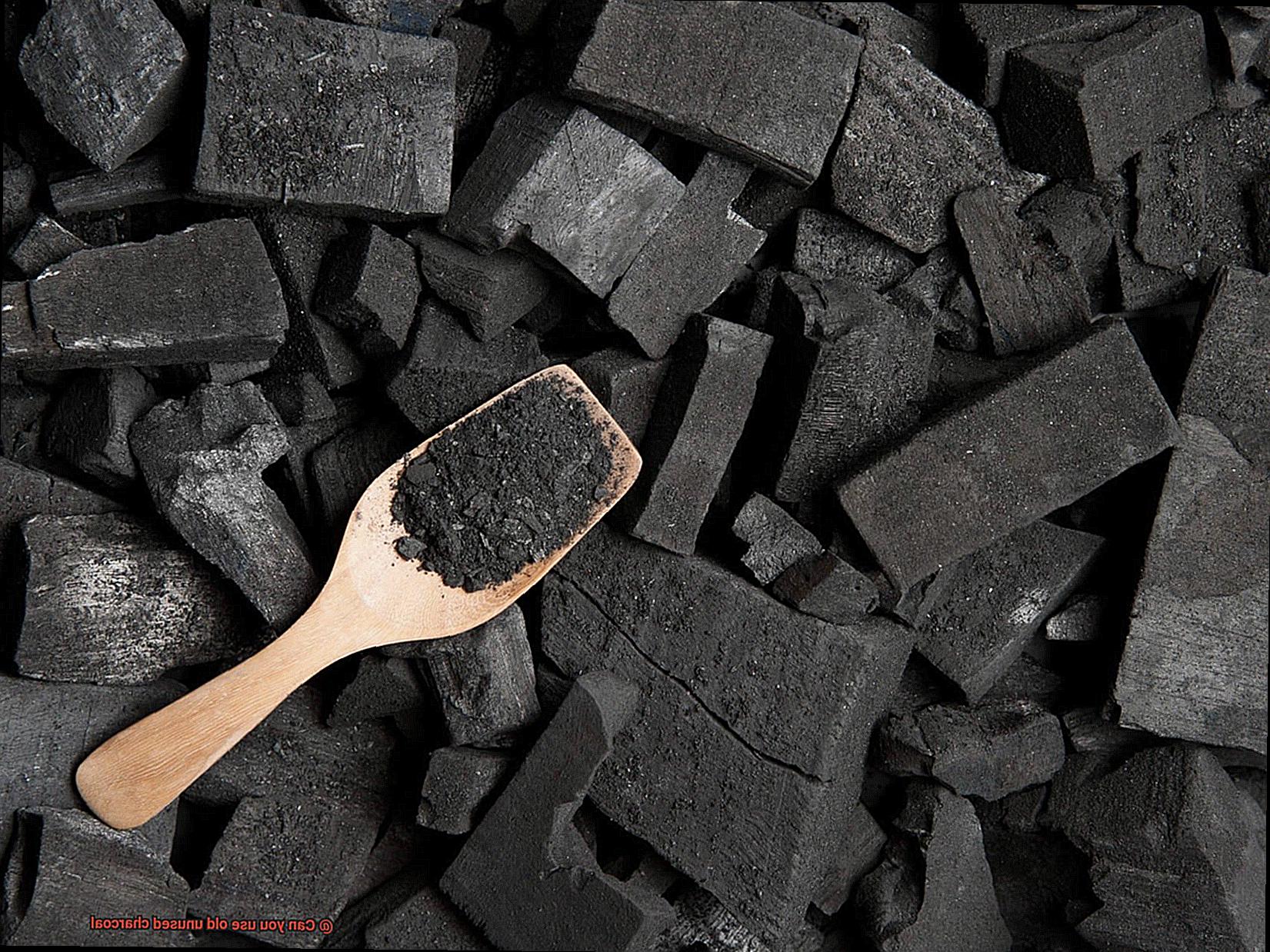
So, here are some key takeaways for proper handling and disposal of old, unused charcoal:
- Store your charcoal in a dry place away from moisture and dampness.
- Inspect the bag or container for signs of damage or deterioration.
- Dispose of charcoal safely by letting it cool completely and placing it in a metal container with a tight-fitting lid.
- Check with your local waste management agency for any specific regulations on charcoal disposal.
- Inspect the charcoal itself for signs of damage or deterioration, such as crumbling or mold growth.
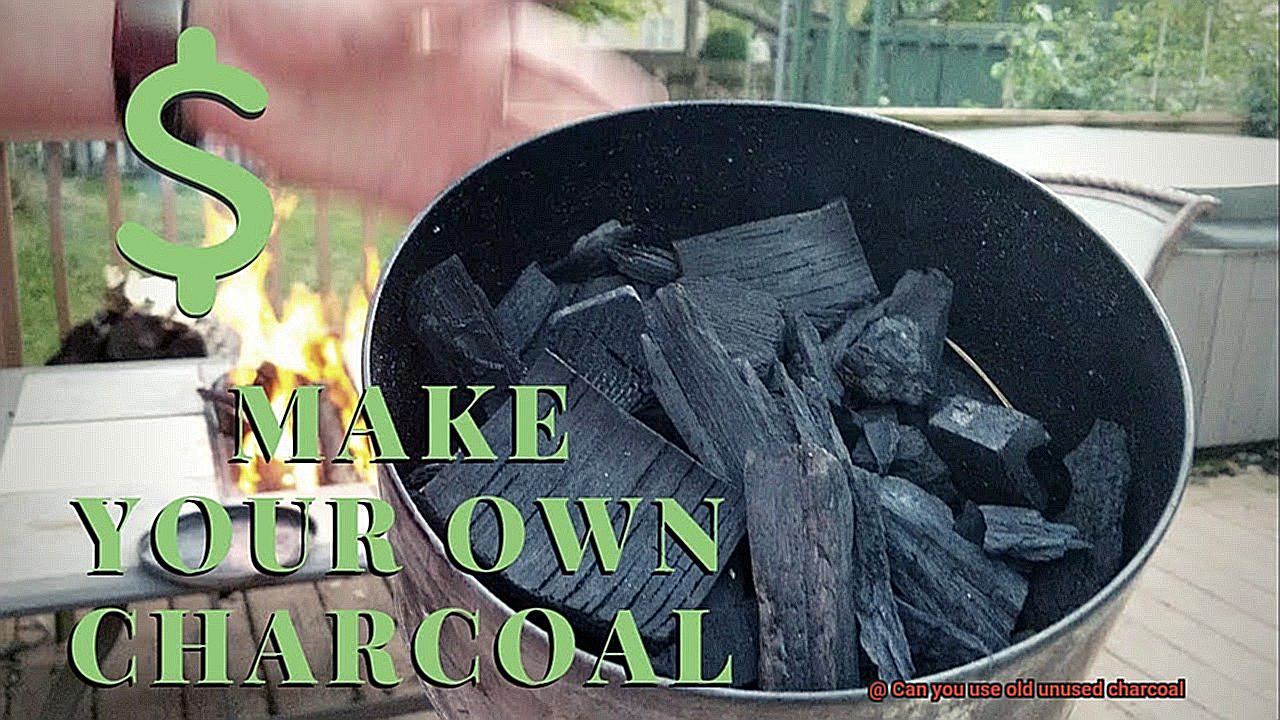
Tips for Optimal Grilling Performance with Old Unused Charcoal
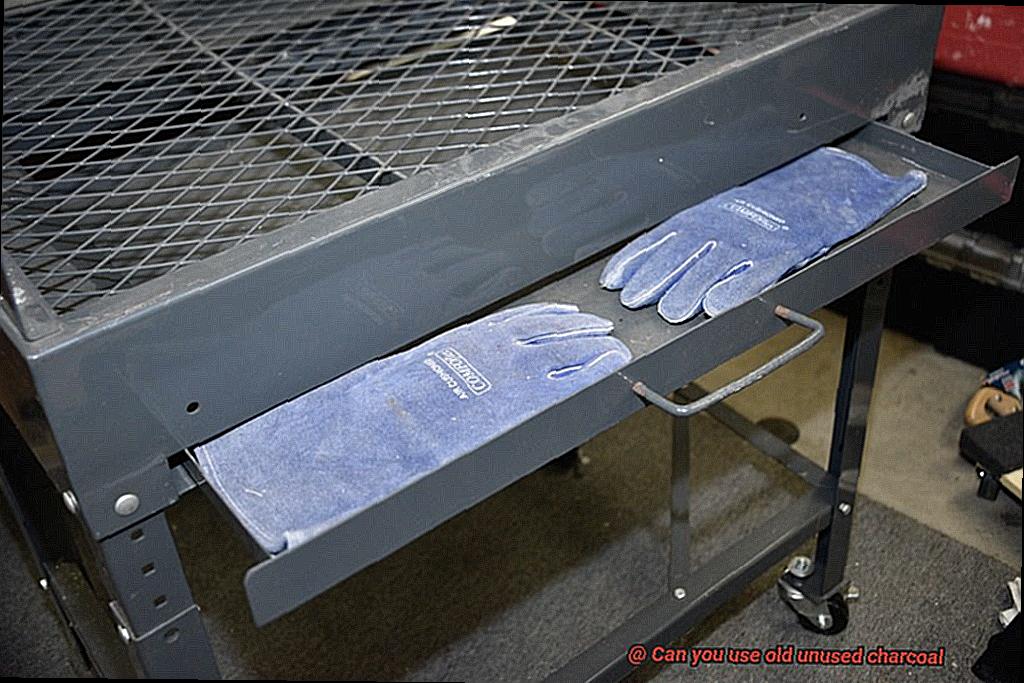
Don’t fret
with proper care and attention, you can still achieve optimal grilling performance with old charcoal. Here are five tips and tricks to help you get the most out of your old charcoal:
Store your charcoal properly
To keep your old charcoal in good condition, make sure it’s stored in a cool, dry place away from moisture and humidity. If it’s exposed to moisture, it may be difficult to light and could produce excess smoke. Proper storage will keep your charcoal dry and ready to use when you need it.
Inspect your charcoal before using it
Before you start grilling, take a close look at your charcoal. If it appears discolored or has a strange odor, it may not be safe to use. Similarly, if you notice any signs of mold or mildew, it’s best to discard the charcoal and start fresh. Make sure your charcoal is safe to use before using it for grilling.
Use a chimney starter
A chimney starter is an excellent tool for lighting charcoal quickly and efficiently. Fill the starter with your old charcoal and light it from the bottom. The heat will quickly spread upward, igniting the charcoal evenly. This method produces less smoke than using lighter fluid and ensures that the coals are evenly lit.
Add fresh charcoal
If your old charcoal isn’t producing enough heat or isn’t burning evenly, consider adding some fresh charcoal to the mix. This can help boost the temperature and give you greater control over your grilling. Mixing old and new charcoal can provide a more consistent cooking temperature for your food.
Consider using wood chips
If you’re looking to add some smoky flavor to your grilled food but your old charcoal isn’t producing enough smoke, try adding some wood chips to the mix. Hickory, mesquite, and applewood are popular options that can enhance the taste of grilled meats and vegetables. The addition of wood chips can give your food a delicious smoky flavor that will impress your guests.
Conclusion
In conclusion, the age-old question of whether or not to use old unused charcoal is not a simple one. While charcoal that has been stored properly can last for years, it may not perform as well as fresh ones. Old charcoal may burn unevenly, emit more ash and smoke, and affect the flavor of your food. Furthermore, using damp or old charcoal can be hazardous because it may not ignite properly and could cause flare-ups.
To achieve the best grilling results and flavor, investing in fresh charcoal is highly recommended. When choosing your charcoal, take into account factors such as wood quality, size and shape, and storage conditions. Proper storage in a dry and cool area away from moisture is essential to maintain its quality.
If you do decide to use old unused charcoal, inspect it thoroughly for signs of contamination or moisture absorption before lighting it up. Consider using a chimney starter to ensure even lighting and adding fresh charcoal if necessary. Moreover, adding wood chips can enhance the smoky flavor of your grilled food.
Lastly, when disposing of old unused charcoal safely let it cool completely before placing it in a metal container with a tight-fitting lid. Be sure to check local regulations before throwing it out in regular trash or recycling bins.

